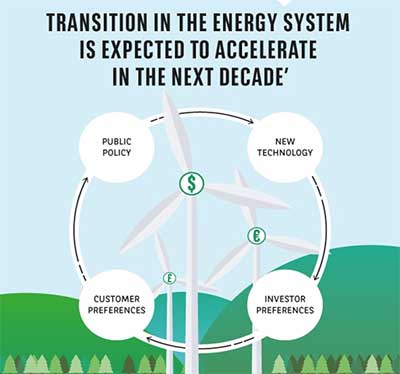Date : 07/06/2023
Relevance: GS Paper3: Energy, Climate Change
Key Words: Multiple pathways, Development trajectories, Domestic energy targets, Energy transition
Context -
- India is set to propose a multiple energy pathways approach at the upcoming G20 forum to accommodate diverse contexts and development trajectories of countries. This proposal recognizes the importance of considering the unique characteristics and priorities of individual states within India's domestic energy transition.
- The country has committed to significant global climate pledges : 50% non-fossil electricity generation capacity by 2030 and net-zero emissions by 2070, but the successful implementation of these targets hinges on engaging with state-level conditions and priorities.
Understanding State-Level Dynamics:
- States play a crucial role in India's energy transition due to the multi-tier governance of energy production and usage.
- Bridging the gap between national ambitions and implementation at the state level is essential for an effective transition. It is necessary to consider the varying incentive structures, processes, and institutional capacities at the state level while formulating national energy targets.
Insights from Achieving Renewable Energy Targets:
- India's progress toward achieving its 2022 target of 175 GW of renewable energy provides valuable insights into the complexities involved. While a significant portion of the target was met, only Gujarat, Karnataka, and Rajasthan achieved their individual goals.
- Furthermore, around 80% of the current renewable energy capacity is concentrated in six states in the western and southern regions of the country.
The Four Functions of States in Energy Transition:
- Within India's federal setting, states perform four critical functions in the energy transition.
- They are responsible for implementing national targets, which often depend on alignment with state priorities and capabilities.
- states must address legacy issues in the electricity sector, such as high losses and unreliable supply, which can be further exacerbated during the transition.
- States serve as laboratories for policy innovations that contribute to the national energy transition. For example, early initiatives by Gujarat and Rajasthan on solar, and Maharashtra and Tamil Nadu on wind energy technologies, have contributed significantly to renewable energy uptake at the national level. Similarly, PM KUSUM is an adoption of successful State experiments on the solarisation of agriculture at a national scale.
- States can become roadblocks to national goals if they perceive them to be misaligned with their priorities.
Engaging with State-Level Conditions and Priorities:
- While India has set ambitious goals for its energy transition and implemented incentives and enforcement mechanisms, it is crucial to engage with the diverse contexts, capabilities, and priorities of individual states.
- Factors such as available techno-economic options, fiscal space, social and political imperatives, and cross-sectoral inter-linkages must be considered.
- A comprehensive approach to planning and execution is necessary, including analyzing whether state targets align with national goals, managing renewable energy-enabled load migration, addressing legacy issues, and allocating resources accordingly.
The Importance of a State-Level Framework:
- In addition to the existing techno-economic discourse, there is a need for a state-level framework to understand energy transition plans, actions, and governance processes.
- Transparency, accountability, affordability, and reliability of services should be taken into account, allowing for stakeholder participation, public legitimacy, and informed policy choices.
- A state-level perspective would also foster greater sensitivity to state-level diversities in national policy discussions, leading to evidence-based decisions and an accelerated energy transition.
Conclusion:
States play a vital role in India's energy transition, given the multi-tier governance structure of energy production and usage. Understanding state-level dynamics, engaging with state priorities, and implementing a state-level framework are crucial for an effective and inclusive transition. By considering the unique contexts and opportunities at the state level, India can achieve its ambitious energy targets and contribute to global climate action while addressing local challenges.
Probable Questions for Mains Exam -
- Question 1: Evaluate the role of states as laboratories for policy innovations in India's energy transition. Provide examples of state-level initiatives that have contributed significantly to renewable energy uptake at the national level. (10 Marks,150 Words)
- Question 2: Analyze the challenges and opportunities associated with implementing renewable energy targets at the state level in India. Provide examples of states that have successfully met their renewable energy goals and discuss the factors contributing to their success. (15 arks,250 Words)
Source : The Hindu






















